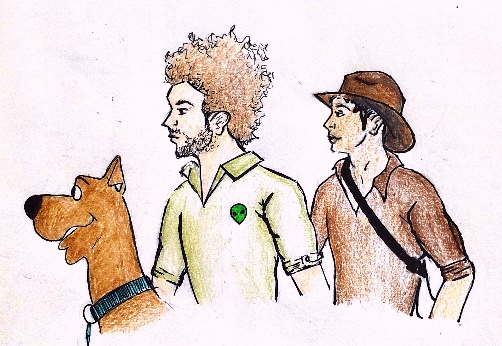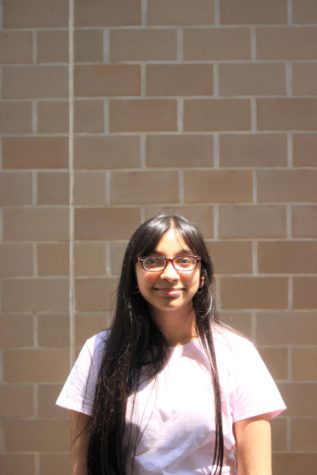It all started with a dog — how Scooby Doo paved the way for paranormal television
October 27, 2019
Let me set the scene: The year is 1969. Horror has yet to interest audiences. Poor special effects, over-the-top acting, and bad writing have tarnished the genre’s name. In the midst of the Vietnam War, society has found that the only truly terrifying thing was mankind. Ghosts and zombies just aren’t cutting it anymore.
The thing audiences love? Laughter. Comedy’s revival in the 1960s was, in part, the result of the very war that killed the horror genre. Comedy served as a distraction, political commentary, and a medium that brought families together.
With the rise of comedy came the “Saturday Morning Cartoon.” The 50s and 60s saw the renaissance of children’s television, due to the success of Disney, Hanna-Barbera, and various studios. Ready to be catered to, children became a huge audience. Animators saw Saturday morning cartoons as a chance to experiment with style, while also making a profit. Hundreds of classics were born through this experimentation: Tom and Jerry, Looney Toons and Scooby Doo.
Scooby Doo started out as all Saturday morning cartoons did: experimentation. Incorporating horror elements into animation was incredibly hard, but Iwao Takamoto, one of the greatest animators and character designers of all time, was up to the challenge. Hanna-Barbera supported his endeavors, and invested quite a bit into the horror cartoon. Scooby Doo started out as The Mystery House, a scrapped cartoon that featured the famous mystery gang facing off with real monsters. However, this did not appeal to audiences at initial screenings. Taking this into note, Hanna-Barbera appointed writers Joe Ruby and Ken Spears to the project. The duo quickly saw that Takamoto’s talents would be perfect for comedic effects. Thus, Scooby Doo was born.
What began as an attempt to animate horror became a union between three major genres: horror, comedy, and children’s animation. The characters focused less on their fear of the unknown, and more on their desire to understand it. Introducing younger generations to paranormal legends by posing the supernatural as a mystery rather than a legend changed generations’ overall view on the unexplained. Rather than viewing the supernatural as a myth with no logical nor mystical proof, people saw alleged paranormal activities simply as, well, activities. Skeptics sought out logical, scientific reasoning for such occurrences, while believers intended to prove that science can’t always explain everything.
Though fictional, Scooby Doo unintentionally sparked the creation of paranormal television. The unknown captivated audiences — both believers and skeptics. People wanted to see real mysteries tackled seriously. Scooby Doo focused on fictional comedy, but audiences wanted drama.
Following Scooby Doo, paranormal literature saw a huge resurgence as youth gained interest in the unexplained. Various books written before 1969 that were forced out of print due to low sales began reprinting in high demand. One of the most notable books to gain large traction was Chariots of the Gods? — a book commonly cited by the History Channel. For the first time, the paranormal genre was seen as something worth investing in.
In 1977, the first legitimate paranormal show, In Search Of…, aired to high ratings and acclaim. The show covered everything from ancient aliens to well-known cryptids. In Search Of… started out with self-proclaimed experts in various pseudosciences discussing their theories. Paranormal television had yet to embrace its flair for the dramatics — until the late 1990s, when the History Channel first started venturing in the pseudosciences.
The History Channel changed the way mainstream paranormal television runs. If Scooby Doo sparked the industry, the History Channel was the wood that kept it going. To audiences, it appeared as though supernatural phenomena were finally being examined seriously. The editing, evidence, and hosts painted the show to be theatrical, but legitimate. Behind the scenes, a different story was told. The History Channel’s executives were incredibly self-aware, and knew for a fact that no genuine scientist would ever take such examinations seriously. So, they might as well make every show as ridiculous as the theories presented — and audiences loved it! Though it started out ironically, the genre eventually became synonymous with over-the-top editing, lack of self-awareness, and sensationalism.
Slowly, the History Channel began to dabble less into the supernatural, and more into extraterrestrials. With this came the end of what I dub “The Golden Age of the Unknown.” Many did stick around with the new route the channel took, but the History Channel’s cultural impact dulled considerably. Audiences began to lose interest in the paranormal once again.
Just as early paranormal interest first rose due to the youth, the key to a paranormal revival was shifting the target audience to a new generation — millennials and Gen Z.
Every revival starts with a homage to a genre’s death. Paranormal died in the ashes of drama, and through drama, it was reborn — this time, through a new platform: the Internet.
The early 2000s saw the creation of Creepypasta’s, or short horror stories often used in chain mails. It reshaped a generation with the creation of Slenderman, Jeff the Killer, and Squidward’s Suicide. It was the peak of scene and emo culture, and completely, unironically serious. Interest in the unexplained skyrocketed under creepypasta, but the true revival was yet to occur, when millennials grew and passed the torch to Gen Z.
Under Gen Z’s reign, creepypasta slowly became a mockery of what it once was. No one took it seriously. Gen Z stripped it of its identity and made it a meme, and through this, fully revived paranormal interest. The unsolved was, once again, viewed through the lens of comedy. And that brings us to the modern era of paranormal shows, led by the one and only, Buzzfeed Unsolved.
With Buzzfeed Unsolved comes a return to the genre’s roots. Focusing on comedy while also maintaining some sort of formality appeals to millenials and Gen Z.
The show is run by amateurs with no expertise whatsoever, which makes every reaction and examination much more genuine and relatable. The skeptic and believer dynamic between the two hosts, Shane Madej and Ryan Bergara, allows banter to be the highlight of the show rather than the supernatural. The show, just like Scooby Doo, portrays the unexplained as a mystery rather than fact, highlighting all theories to every story. That being said, the actual content of the show is incredibly well researched.
Buzzfeed Unsolved balances comedy and horror to create what Scooby Doo intended to: a perfect union. The genre has come a full circle. In comedy it was born, and in comedy, it thrives.


